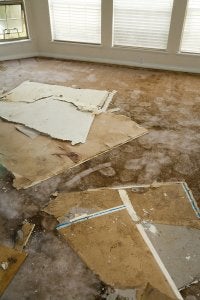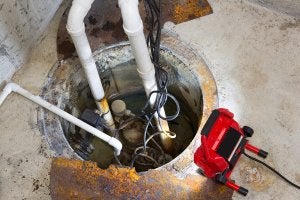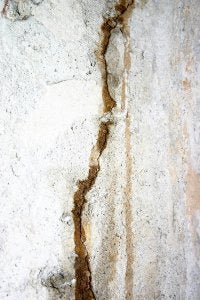-
What Are The Signs of Water Damage?
 Because the area has so many older houses, homeowners in and near Baltimore are seldom surprised to find mold in their basements. But this harmful fungus is just one of the many problems you can experience when your basement is leaky . Basement water damage can cause extensive, near-catastrophic damage that is difficult and expensive to repair. Walls can rot, and if water gets into cracks in concrete or stone, it can compromise the structural integrity of your home, including the foundation. Besides mold, other signs of water damage include:
Because the area has so many older houses, homeowners in and near Baltimore are seldom surprised to find mold in their basements. But this harmful fungus is just one of the many problems you can experience when your basement is leaky . Basement water damage can cause extensive, near-catastrophic damage that is difficult and expensive to repair. Walls can rot, and if water gets into cracks in concrete or stone, it can compromise the structural integrity of your home, including the foundation. Besides mold, other signs of water damage include:Discolorations on the Basement Ceiling
If you are unsure whether or not your home has a waterproof basement, go downstairs and inspect the exterior walls and the ceiling. Turn on all the lights and check the color of the paint or wallpaper. Splotches of discoloration or fading are telltale signs that you have leaks, and that water is seeping into the walls and foundation of your home.
Bumpy Textures on the Walls
Beneath the paint or wallpaper, the walls in your basement may be drywall or wood-framed, especially if you have a newer home. When you have inadequate basement waterproofing, the walls can absorb water, which causes them to swell and contract unevenly, leaving behind bumps and pockmarks. Run a gloved hand along the wall, gently, to check for smoothness.
Crumbling Wood Details
Wooden details, such as baseboards, crown molding, and window frames, are especially susceptible to water damage and will begin to rot very quickly if they are near the source of leaks. Look and feel for damp or crumbling wood to reveal water damage in the basement or attic.
Musty Smells and Damp Odors
If you scrub the mold from your walls, but still notice a musty smell or any type of unpleasant odor a few days later, you likely have a leak and water damage somewhere in the basement. Only professional mold remediation can totally eradicate this harmful fungus. The smell might also be coming from rotting wood in window frames or other structural elements of your home.
-
How Sump Pump Installation Works
Many homes have sump pumps in Baltimore. If yours does not, you should consider having a professional install one as part of your basement waterproofing strategy . A sump pump can protect your home from basement mold growth, foundation damage, and other types of water damage. When combined with other appliances such as crawlspace dehumidifiers, sump pumps can remove almost all the excess moisture from your home.
As water in your basement flows into the sump basin, the pump will activate and begin to drain it away safely, preventing a flooded basement. To see how these sump pumps work and how professionals install them, watch this video.
-
Understanding the Different Types of Basement Waterproofing
 When you own your home, there are many maintenance tasks and chores for which you are responsible. One of the most important is ensuring that your basement is waterproof. Fortunately, it is easy to identify a reputable company offering basement waterproofing serving Baltimore . Depending on the age and condition of your home, there are several different types of waterproofing that your basement may require. Learn about them below.
When you own your home, there are many maintenance tasks and chores for which you are responsible. One of the most important is ensuring that your basement is waterproof. Fortunately, it is easy to identify a reputable company offering basement waterproofing serving Baltimore . Depending on the age and condition of your home, there are several different types of waterproofing that your basement may require. Learn about them below.Interior Waterproofing
As you might expect, interior waterproofing focuses on the walls and ceiling inside your basement. The goal of this type of waterproofing is to keep the usable space inside your basement free of water and mold. If the walls in your basement are unpainted, you can have concrete waterproofing coatings or silicate-based concrete sealers applied to prevent water from getting in. Be sure they are finished with waterproof paint for extra protection.
Interior Basement Drainage
Interior drainage is not exactly a type of waterproofing—it is a supplement to other waterproofing services. When there is water in your basement, it can stagnate and cause mildew to grow, making mold removal necessary. Interior basement drainage helps remove water that enters during heavy rains or flash flooding, preventing damage from occurring. Depending on the design of your basement, sump pump installation may be necessary to ensure complete drainage.
Exterior Waterproofing
This is the most comprehensive and effective form of basement waterproofing. The two types above treat the symptom: water in the basement. This treats the problems: uneven grading and inadequate drainage. To truly prevent your basement from becoming damp and to keep water from damaging your home, you need to have a team of professionals excavate a ditch all around your home, down to the foundation level, and install proper drainage. This can also include putting a waterproof coating or panels next to the foundation, and installing French drains. Once you have proper drainage in place, your basement will truly very waterproof. For more complete protection, you should consider combining all three types of waterproofing: have professionals install exterior drains and a sump pump, then apply interior coatings.
-
The Health Hazards of Basement Flooding
 Water in your basement can be more than just a minor nuisance. When you neglect basement waterproofing for too long, black mold can form in your basement or crawlspace. If you or a loved one is exposed to black mold, you could be at risk of developing serious health problems. Some of the health hazards of basement flooding and mold include allergic reactions, asthma attacks, and skin irritation. By setting up basement waterproofing serving Baltimore, you will be able to protect yourself and your family from the health hazards of basement flooding. Along with basement waterproofing services , you may want to also schedule mold removal for your home. These services will completely eliminate the health risks associated with flood water in your basement or crawlspace. A highly rated contractor serving Baltimore can ensure that your home is completely safe to be occupied by yourself and your loved ones.
Water in your basement can be more than just a minor nuisance. When you neglect basement waterproofing for too long, black mold can form in your basement or crawlspace. If you or a loved one is exposed to black mold, you could be at risk of developing serious health problems. Some of the health hazards of basement flooding and mold include allergic reactions, asthma attacks, and skin irritation. By setting up basement waterproofing serving Baltimore, you will be able to protect yourself and your family from the health hazards of basement flooding. Along with basement waterproofing services , you may want to also schedule mold removal for your home. These services will completely eliminate the health risks associated with flood water in your basement or crawlspace. A highly rated contractor serving Baltimore can ensure that your home is completely safe to be occupied by yourself and your loved ones.
